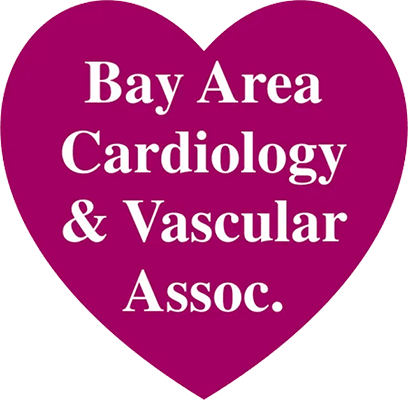May-Thurner Syndrome
What is May-Thurner Syndrome?
The left common iliac vein carries blood from the left leg back up to the heart. In 22-24% of people, the anatomy of the right common iliac artery crossing over the vein promotes compression of the vein. While often asymptomatic initially, over time the pulsatile force of the artery can irritate the vein wall. This stimulates overgrowth of the venous intima, creating spurs and bands inside the vein which further obstruct flow.
As blood flow becomes obstructed, the risk of pooling, turbulence, and clot formation rises. Collateral veins may form, causing varicose veins on the left leg. Iliac vein compression is the primary driver of May-Thurner syndrome.
Causes & Symptoms of May-Thurner Syndrome
The exact cause of MTS is unknown, but it is believed to be caused by a combination of anatomical factors and lifestyle choices. Anatomical factors such as the position of the right iliac artery and the width of the left iliac vein, are thought to make the left iliac vein more susceptible to compression. Lifestyle choices, such as prolonged sitting or standing, can also increase the pressure on the veins in the legs and make it more likely that the left iliac vein will become compressed.
Risk factors that increase the likelihood of developing May-Thurner Syndrome
- Gender
Females are more commonly affected by MTS. - Age
Young and middle-aged adults are at a higher risk. - History of Blood Clots
Individuals with a history of DVT or clotting disorders are more susceptible. - Sedentary Lifestyle
Prolonged sitting and lack of physical activity can contribute to venous issues. - Pregnancy
The growing uterus can exert pressure on the veins, affecting blood flow.
Symptoms of May-Thurner Syndrome
- Leg pain, especially in the left leg
This is the most common symptom of MTS. The pain is often described as a dull ache or a cramping sensation. It can be worse after prolonged sitting or standing, and it may improve with rest. - Leg swelling, especially in the left leg
This is another common symptom of MTS. The swelling is caused by the buildup of blood in the left leg. It is often worse in the evening and may improve with elevation. - Deep vein thrombosis (DVT)
A blood clot in a deep vein of the leg is a serious complication of MTS. DVT can cause pain, swelling, redness, and warmth in the affected leg. It can also lead to a pulmonary embolism, which is a blood clot that travels to the lungs. - Chronic leg discomfort, such as heaviness, fatigue, or numbness
This is a less common symptom of MTS. It is caused by the reduced blood flow to the leg. - Skin changes, such as redness, discoloration, or ulceration
These skin changes can occur in the affected leg due to the reduced blood flow. - Pain with activity, such as walking or standing
This symptom is often worse in the early stages of MTS. It can improve with time as the body adapts to the compression of the left iliac vein.
Testing & Diagnosis for May-Thurner Syndrome
As May-Thurner Syndrome (MTS) shares symptoms with other vascular conditions, proper diagnosis is crucial to tailor an appropriate treatment plan.
The initial step in diagnosing MTS involves discussing your medical history and symptoms with a healthcare professional. Informing them about any previous venous issues, clotting disorders, or relevant conditions helps guide the diagnostic process. A thorough physical examination may reveal signs such as leg swelling, tenderness, or visible varicose veins. Here's an overview of subsequent testing and diagnostic procedures used to identify May-Thurner Syndrome:
- Ultrasound
Duplex ultrasound is often the first imaging technique used. It combines traditional ultrasound with Doppler technology to visualize blood flow, detect blood clots, and assess the structure of veins. - Venography
In cases where ultrasound results are inconclusive, venography might be recommended. During this procedure, a contrast dye is injected into the veins, and x-rays are taken to highlight any abnormalities, including vein compression. - Intravascular Ultrasound (IVUS)
This advanced technique employs a catheter with an ultrasound probe attached. It is inserted into the affected vein, allowing detailed images of the vein's interior, which helps in assessing the degree of compression. - Magnetic Resonance Venography (MRV)
MRV uses magnetic resonance imaging (MRI) to create detailed images of the venous system. It can provide a comprehensive view of the blood vessels and assess any anatomical abnormalities.
May-Thurner Syndrome Treatments
The goals of treating May-Thurner syndrome are to reduce compression on the iliac vein, improve venous circulation, and prevent blood clots. Ongoing monitoring and proactive DVT prevention are also crucial. A combination of approaches tailored to each patient helps relieve MTS symptoms and complications.
The treatment for MTS depends on the severity of the symptoms. In mild cases, treatment may not be necessary. However, in more severe cases, treatment may include:
- Anticoagulant therapy
This therapy helps to prevent blood clots from forming. It is often used in the early stages of MTS to prevent DVT. - Venous stenting
This procedure involves placing a stent in the left iliac vein to widen the vein and improve blood flow. It is a minimally invasive procedure that can be used to treat more severe cases of MTS. - Venous bypass surgery
This surgery involves creating a new pathway for blood to flow around the compressed left iliac vein. It is a more invasive procedure than venous stenting, but it is often used in cases where the left iliac vein is severely compressed or damaged.

